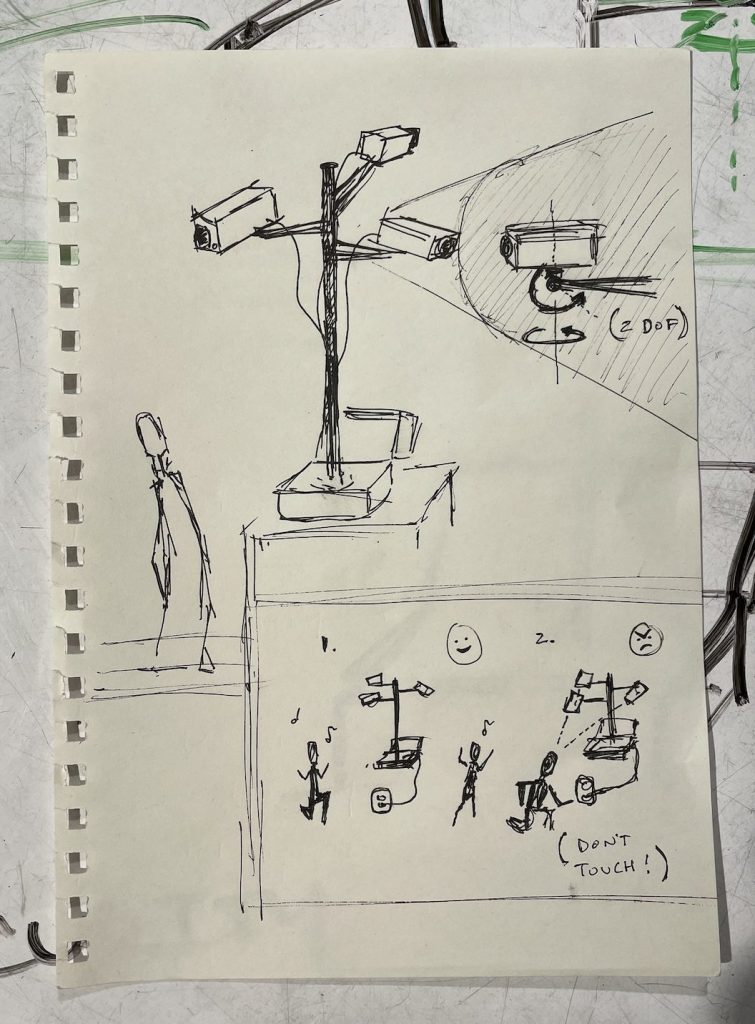The central artistic inquiry of our project circles around attention. People would go to lengths to draw attention to themselves, whether it is from other people, or just from cute animals they see at the zoo or on the streets. So for our project, we wanted to create a robot that would hopefully trigger that behavior from the audience, turning the center of the exhibition to not just the robot, but also the audience themselves.
The visual appearance of the robot would be similar to a security tree. On a single pole, 3 cameras would be sticking out of the pole from different directions, each with two degrees of freedom that would allow them to look at a person. The reason we wanted multiple cameras is that they can easily express to the audience who is the center of attention. By focusing all cameras onto a single person or object, we can create a strong sense of attention with limited motion. We wanted it on a single pole so that the audience would think of it as a single character. A sketch of the project is shown below:

We wanted our project to be highly interactive, and to do that, we would program the camera’s motion to pay attention to the most interesting behavior it can observe. With 3 cameras, the robot scans its surrounding in a smooth motion, like a random observer. When some audience member starts exhibiting bizarre or interesting behaviors, one or more of the cameras would start focusing on that person depending on the scale of motion. Thus if multiple people are seeking attention at the same time, a competition could arise to see who would grab the most attention.
We also wanted to give the robot life-like characteristics. We think portraying the robot as a living creature would make the audience more tempted to attract its attention. To add to that characteristic, we wanted an additional mechanism, where the robot is visibly connected to a “power source”. While the robot is happily observing its surrounding, it can feel “threatened” when someone approaches its source of life, and shift all of its attention to the person attempting to unplug it. Through led lights and camera motion, we want to be able to convey its emotions to the audience.
Some of the visual qualities that we haven’t decided on include the specific form of the “cameras”, the form for the power source. We think both having literal cameras or “eyes” could portray the idea, but we have to decide on how it would work best with the suitcase.